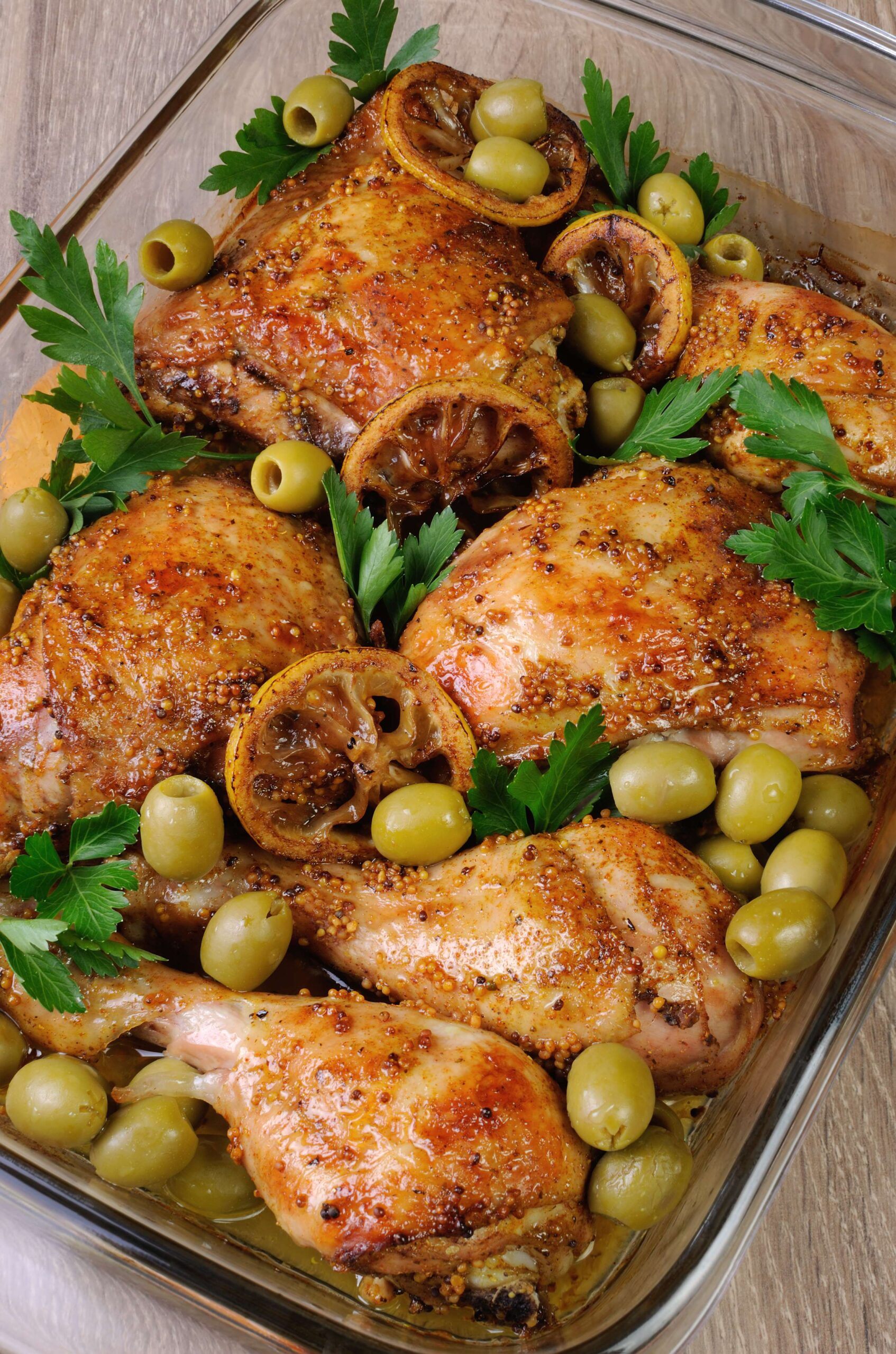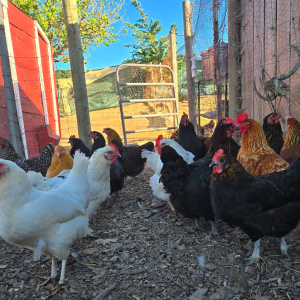Lebanese cuisine features olives and olive oil as essential ingredients in a variety of dishes. Olives, whether green or black, are commonly eaten as part of mezze, added to salads, incorporated into stews, and used in stuffing. Here are some of the most popular Lebanese dishes with olives:
1. Lebanese Mezze & Appetizers with Olives
A. Makdous (Stuffed Pickled Eggplants)
- Description: Small baby eggplants stuffed with walnuts, garlic, red pepper, and olive oil, then preserved in jars.
- Olives’ Role: Often served with green or black olives as part of a mezze spread.
- Flavor: Tangy, nutty, and rich.
B. Labneh with Olives
- Description: Strained yogurt (labneh) topped with extra virgin olive oil and olives.
- Olives’ Role: Green or black olives enhance the tanginess of labneh.
- Best Served With: Pita bread or manakish.
C. Lebanese Olive Mix (Zeitoun Mshakkal)
- Description: A marinated mix of green and black olives with lemon, garlic, chili, and herbs.
- Flavor: Spicy, tangy, and savory.
- Best Served With: Mezze platters or as a snack.
2. Lebanese Salads Featuring Olives
A. Tabbouleh with Olives
- Description: The classic parsley and bulgur salad with added olives for extra depth.
- Olives’ Role: Provides saltiness to balance the acidity of the lemon dressing.
B. Fattoush with Olives
- Description: A refreshing salad with crispy pita chips, cucumbers, tomatoes, and sumac.
- Olives’ Role: Green olives add a briny, tangy flavor.
C. Shanklish Salad (Lebanese Aged Cheese with Olives)
- Description: Shanklish cheese (fermented and spiced) crumbled over tomatoes, onions, and green olives.
- Best Served With: Pita bread or alongside grilled meats.
3. Lebanese Main Dishes with Olives
A. Djej w Zeitoun (Lebanese Chicken with Olives)
- Description: Chicken stewed with green olives, garlic, onions, and lemon juice.
- Flavor: Savory, citrusy, and aromatic.
- Best Served With: Vermicelli rice or flatbread.
B. Kafta bil Zeit (Meatballs in Olive & Tomato Sauce)
- Description: Lebanese kafta (ground meat with parsley and onions) simmered in a tomato sauce with olives.
- Olives’ Role: Green or black olives add brininess and richness to the sauce.
C. Lebanese Fish Tagine with Olives (Samak w Zeitoun)
- Description: Fish fillets cooked in a tomato-based sauce with green olives, capers, and lemon.
- Flavor: Citrusy, briny, and slightly spicy.
- Best Served With: Vermicelli rice or pita bread.
D. Lebanese Potato and Olive Stew (Batata w Zeitoun)
- Description: Potatoes stewed with onions, garlic, olive oil, and green olives.
- Flavor: Comforting, slightly tangy, and earthy.
- Best Served With: Warm flatbread or rice.
4. Lebanese Breads & Pies with Olives
A. Manakish Zaatar with Olives
- Description: Lebanese flatbread topped with a mixture of thyme (zaatar), sesame seeds, olive oil, and black olives.
- Olives’ Role: Provides a salty contrast to the earthy zaatar blend.
- Best Served With: Fresh vegetables and labneh.
B. Sfeeha (Lebanese Meat Pies) with Olives
- Description: Mini meat pies filled with spiced minced meat, tomatoes, and olives.
- Olives’ Role: Green olives give a tangy balance to the meaty filling.
C. Fatayer Bi Zeitoun (Lebanese Olive Pies)
- Description: Flaky pastries stuffed with green or black olives, onions, and spices.
- Flavor: Savory, buttery, and slightly tangy.
5. Lebanese Sauces & Dips with Olives
A. Muhammara with Olives
- Description: A red pepper and walnut dip, often garnished with black olives.
- Flavor: Smoky, slightly sweet, and nutty.
- Best Served With: Pita bread or grilled meats.
B. Olive Tapenade (Zeitoun Mfarroum)
- Description: A spread made from blended black or green olives, capers, garlic, and olive oil.
- Flavor: Salty, garlicky, and slightly tangy.
- Best Served With: Toasted bread or crackers.
6. Lebanese Pickled Olives & Preserves
A. Zeitoun Makbous (Lebanese Pickled Olives)
- Description: Home-pickled green and black olives in brine with lemon, garlic, and chili.
- Best Served With: Breakfast, mezze, or salads.
B. Olive Jam (Mourabba Zeitoun)
- Description: A sweet and savory jam made from black olives, sugar, and citrus zest.
- Flavor: Uniquely sweet and tangy.
- Best Served With: Cheese or bread.
7. Lebanese Desserts with Olive Oil
A. Sfouf (Lebanese Turmeric Cake with Olive Oil)
- Description: A semolina-based cake flavored with turmeric and olive oil.
- Flavor: Earthy, slightly sweet, and aromatic.
- Best Served With: Lebanese coffee or tea.
B. Maamoul with Olive Oil
- Description: Traditional Lebanese date or walnut cookies made with olive oil instead of butter.
- Flavor: Nutty, slightly sweet, and crumbly.
C. Orange & Olive Oil Cake
- Description: A Mediterranean-style citrus cake made with extra virgin olive oil.
- Flavor: Moist, fragrant, and slightly tangy.
- Best Served With: Fresh fruit or yogurt.
Conclusion
Lebanese cuisine is deeply connected to olives and olive oil, from mezze dishes and salads to stews, bread, and even desserts. Olives bring briny, tangy flavors, while olive oil enhances the richness and authenticity of dishes.













